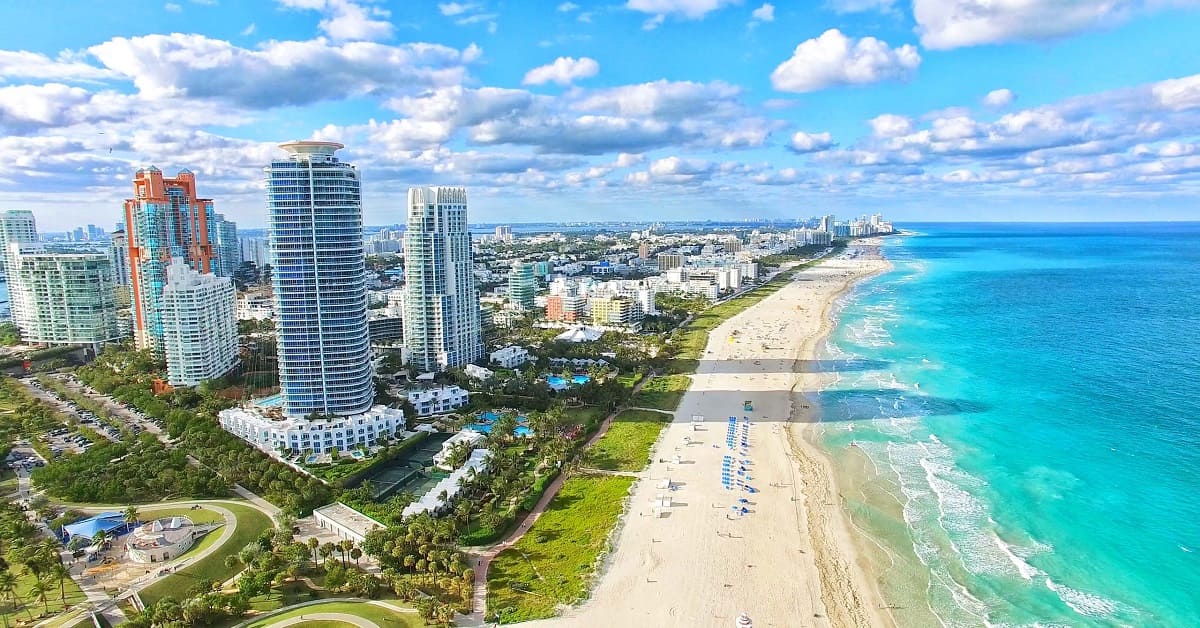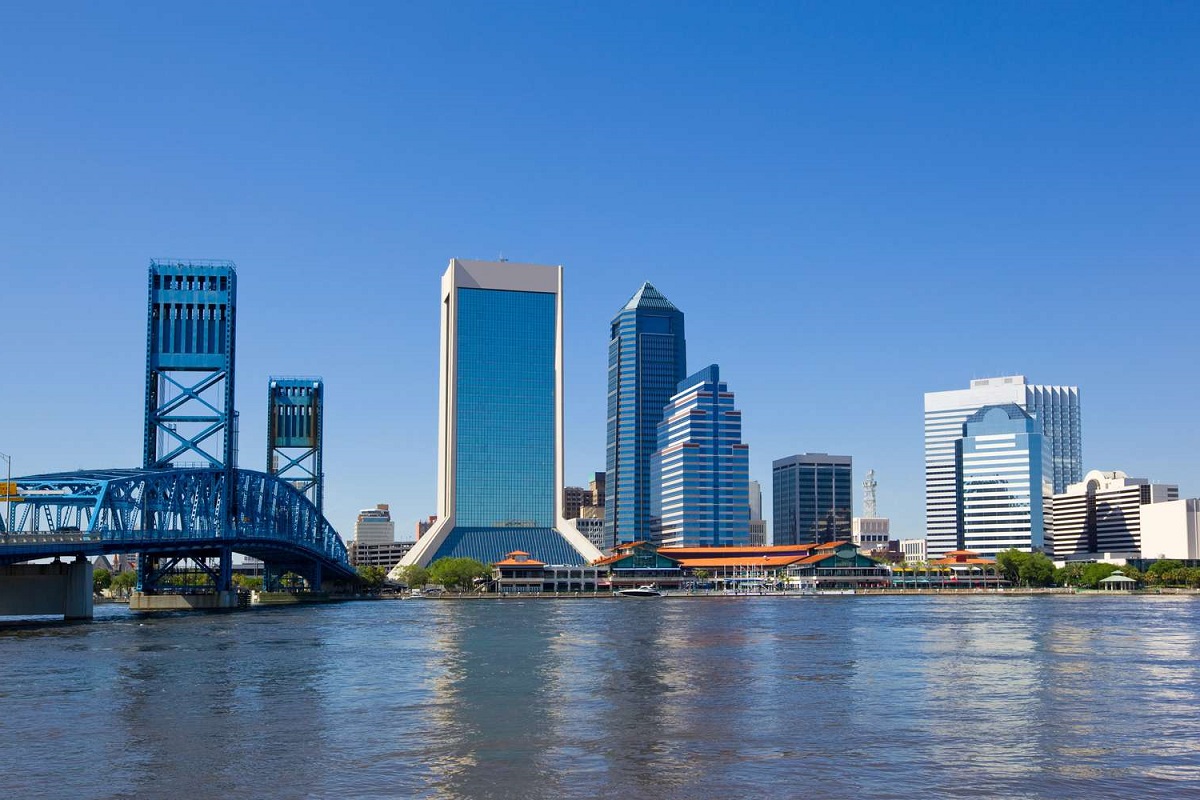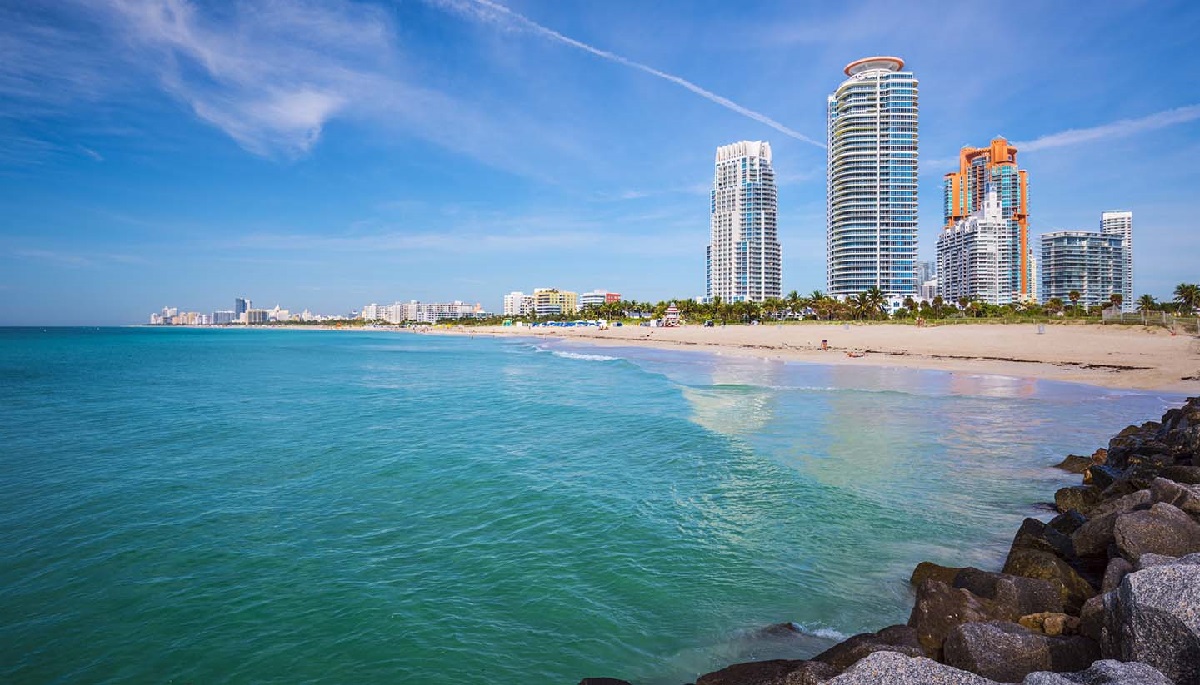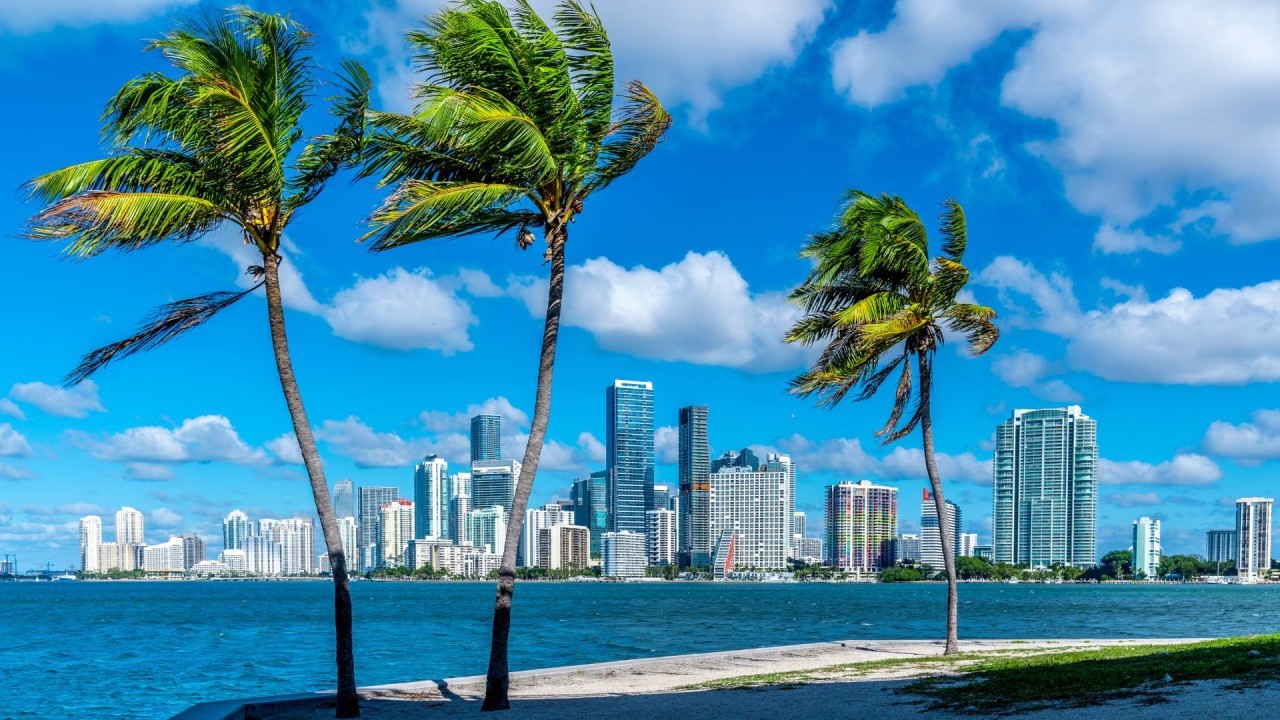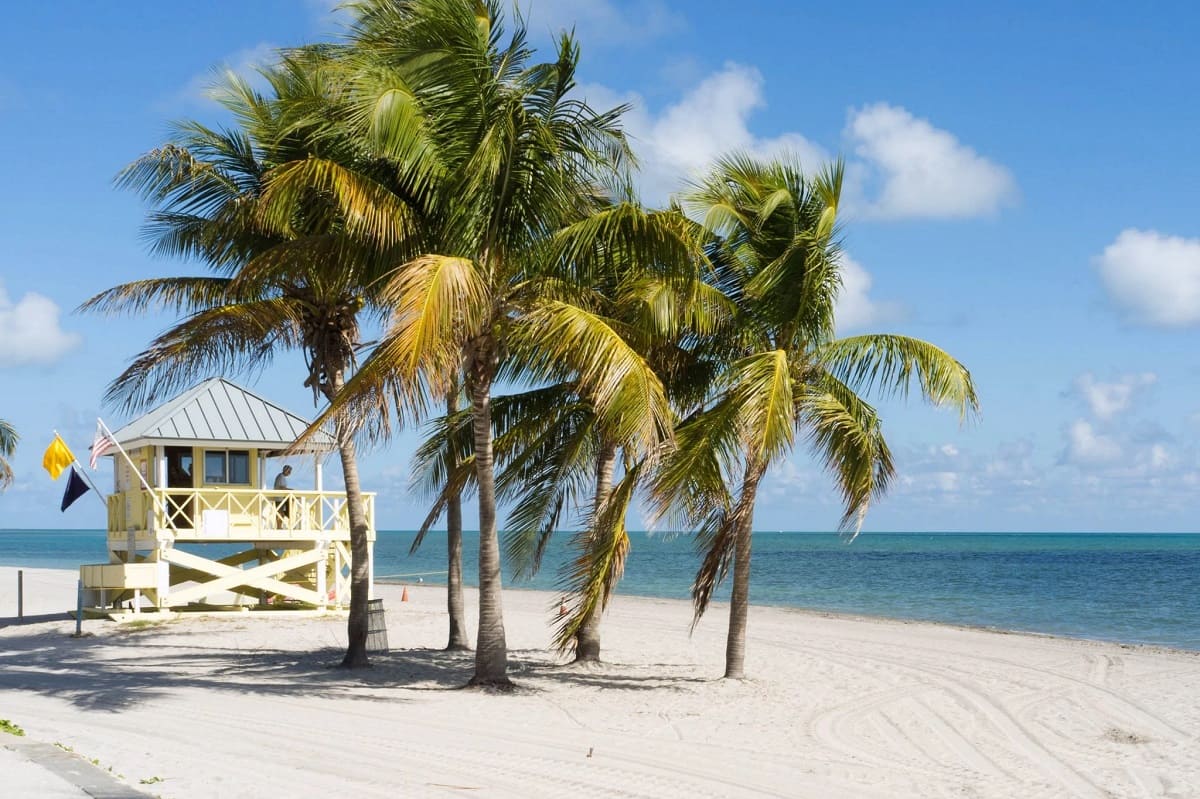Home>Weather and Climate>Average Winter Temperatures In Miami, Florida
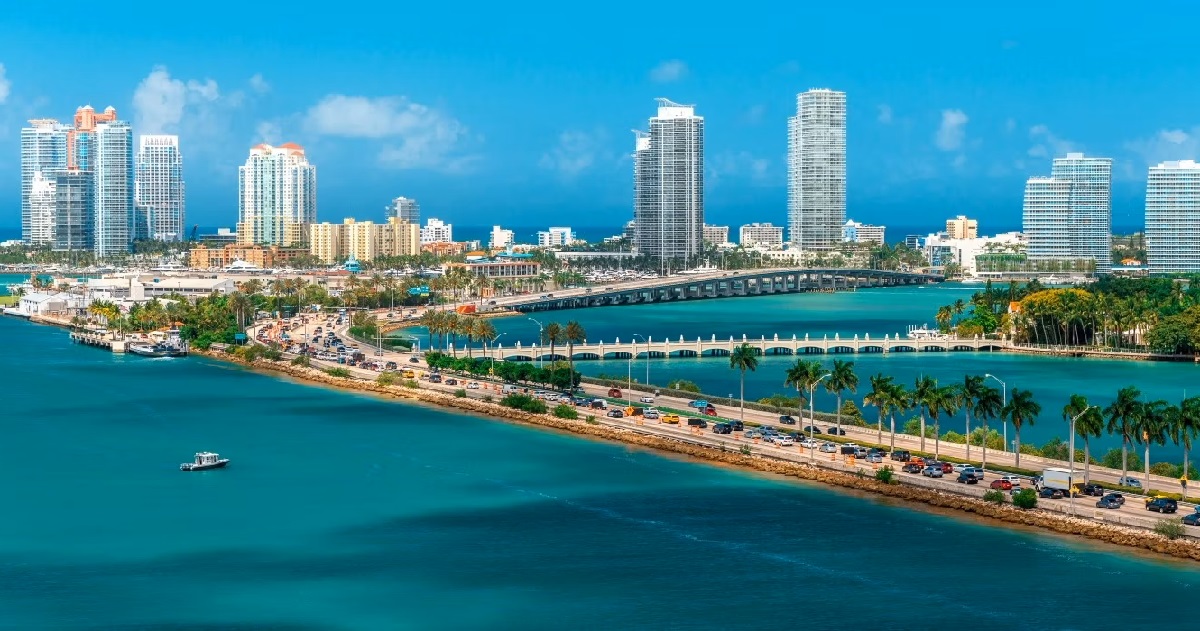

Weather and Climate
Average Winter Temperatures In Miami, Florida
Published: April 11, 2024
Discover the average winter temperatures in Miami, Florida, and learn about the weather and climate in this vibrant city. Plan your visit with confidence!
(Many of the links in this article redirect to a specific reviewed product. Your purchase of these products through affiliate links helps to generate commission for Temperatures.com, at no extra cost. Learn more)
Table of Contents
Introduction
Miami, Florida, is renowned for its vibrant culture, stunning beaches, and lively atmosphere. However, one of the city's most appealing features is its pleasant climate, which draws visitors and residents alike. In this article, we will delve into the average winter temperatures in Miami, exploring the factors that influence them and their impact on the city's environment.
Miami's winter temperatures play a pivotal role in shaping the daily lives of its inhabitants and the overall ecosystem. Understanding these temperatures is crucial for appreciating the city's unique climate and its influence on various aspects of life, from outdoor activities to environmental sustainability.
As we embark on this exploration, we will uncover the historical trends of winter temperatures in Miami, shedding light on the fluctuations that have occurred over the years. Additionally, we will examine the factors that contribute to these temperature variations, providing valuable insights into the dynamic nature of Miami's winter climate.
By gaining a deeper understanding of Miami's winter temperatures, we can gain a newfound appreciation for the city's climate and its significance in shaping the experiences of those who call this vibrant metropolis home. Let's embark on this enlightening journey to unravel the mysteries of Miami's winter temperatures and their profound impact on the local environment.
Read more: Miami Average Temperature Guide
Understanding Miami's Climate
Miami, Florida, is characterized by a tropical monsoon climate, which is influenced by its proximity to the Gulf of Mexico and the Atlantic Ocean. This unique geographical positioning plays a pivotal role in shaping the city's climate, particularly during the winter months. The region experiences mild and relatively dry winters, making it an attractive destination for those seeking respite from harsher winter conditions prevalent in other parts of the United States.
During the winter season, Miami enjoys average temperatures ranging from the mid-60s to low 70s Fahrenheit, providing a welcome escape for individuals seeking a reprieve from colder climates. The city's climate is marked by its mild and comfortable winter temperatures, which contribute to its allure as a popular tourist destination during the colder months.
The influence of the Atlantic Ocean and the Gulf Stream, a warm ocean current, significantly impacts Miami's climate, contributing to the moderation of winter temperatures. The oceanic influence helps prevent extreme temperature fluctuations, resulting in the maintenance of relatively stable and pleasant winter conditions. This unique climate characteristic distinguishes Miami from many other cities in the United States, making it an appealing destination for individuals seeking a warm and inviting winter escape.
Moreover, Miami's climate is also shaped by its subtropical location, characterized by lush vegetation and diverse ecosystems. The city's natural surroundings, including the Everglades and Biscayne National Park, are intricately intertwined with its climate, creating a harmonious balance that supports a rich and vibrant environment.
The understanding of Miami's climate is essential for appreciating the city's unique appeal and the experiences it offers, particularly during the winter season. By recognizing the factors that contribute to its mild and inviting winter temperatures, one can gain a deeper appreciation for the city's distinctive climate and its influence on the daily lives of its residents and visitors.
In the following sections, we will delve into the specific factors that influence winter temperatures in Miami, shedding light on the dynamic interplay of elements that contribute to the city's remarkable climate. Through this exploration, we will uncover the intricate mechanisms that shape Miami's winter temperatures, providing valuable insights into the city's captivating climate.
Factors Affecting Winter Temperatures
The winter temperatures in Miami, Florida, are influenced by a myriad of factors that collectively contribute to the city's mild and inviting climate during the colder months. Understanding these influential elements is crucial for comprehending the dynamics of Miami's winter temperatures and their impact on the local environment.
-
Oceanic Influence: Miami's proximity to the Atlantic Ocean and the presence of the Gulf Stream play a pivotal role in shaping its winter temperatures. The warm ocean currents help moderate the city's climate, preventing drastic temperature fluctuations and contributing to the maintenance of relatively stable and mild winter conditions. The oceanic influence serves as a natural buffer against extreme cold, ensuring that Miami experiences pleasant temperatures during the winter months.
-
Subtropical Location: Miami's subtropical positioning further contributes to its mild winter temperatures. The city's lush vegetation and diverse ecosystems, characteristic of subtropical regions, play a role in regulating temperatures and fostering a comfortable climate. The abundance of greenery and natural landscapes helps maintain a balanced and inviting environment, enhancing the overall appeal of Miami's winter season.
-
Urban Heat Island Effect: The urban heat island effect, resulting from the concentration of human activities and infrastructure, can impact winter temperatures in urban areas. While Miami's urban landscape may experience slight variations due to this effect, the city's proximity to the ocean and the presence of ample green spaces mitigate the potential impact, ensuring that the winter temperatures remain relatively stable and pleasant.
-
Weather Patterns and Fronts: The interaction of weather patterns and fronts, influenced by atmospheric conditions, can also affect winter temperatures in Miami. While the city generally experiences mild and dry winters, occasional weather systems and frontal passages may lead to temporary fluctuations in temperatures. However, the overall climatic influences, including the oceanic and subtropical factors, contribute to the resilience of Miami's winter temperatures, maintaining a predominantly comfortable and inviting climate.
-
Climate Change Considerations: In the broader context of climate change, the long-term trends and potential shifts in global climate patterns can impact winter temperatures in Miami. While the city's climate resilience and natural influences have historically contributed to its mild winters, ongoing environmental changes underscore the importance of monitoring and addressing potential impacts on winter temperatures and the overall climate in the region.
By examining these influential factors, we gain valuable insights into the intricate mechanisms that shape Miami's winter temperatures. The interplay of oceanic influences, subtropical characteristics, urban dynamics, and broader climatic considerations collectively contribute to the city's remarkable climate, fostering an environment that is both inviting and resilient, even during the winter months.
Historical Winter Temperature Trends
The historical winter temperature trends in Miami, Florida, offer valuable insights into the dynamic nature of the city's climate and the fluctuations that have occurred over the years. By examining historical data and temperature trends, we can gain a deeper understanding of the evolving winter conditions in Miami and their significance in shaping the city's environment.
Over the past several decades, Miami has experienced a notable consistency in its winter temperature patterns, characterized by mild and relatively stable conditions. The average winter temperatures have typically ranged from the mid-60s to low 70s Fahrenheit, reflecting the city's reputation for offering a warm and inviting escape during the colder months. This consistency has contributed to Miami's appeal as a sought-after destination for individuals seeking respite from harsher winter climates prevalent in other parts of the United States.
Moreover, the historical temperature records reveal a remarkable resilience in Miami's winter climate, with minimal fluctuations and a consistent trend of mild temperatures. This stability has played a pivotal role in shaping the city's identity as a vibrant and welcoming locale, attracting visitors and residents alike with its promise of comfortable winter conditions.
While occasional variations in winter temperatures have been observed over the years, Miami's climate has demonstrated a remarkable capacity to maintain its characteristic mildness, largely attributed to the influence of the Atlantic Ocean, the Gulf Stream, and the city's subtropical positioning. These natural factors have contributed to the preservation of Miami's inviting winter climate, fostering an environment that remains relatively unaffected by extreme temperature shifts.
The historical winter temperature trends in Miami underscore the city's resilience in the face of climatic variations, highlighting the enduring appeal of its mild and comfortable winters. By examining the historical data, we can appreciate the consistent nature of Miami's winter temperatures and their profound impact on the city's environment and overall allure.
In the following sections, we will delve into the impact of winter temperatures on Miami's environment, further exploring the intricate relationship between climate dynamics and the city's natural landscapes. Through this exploration, we will uncover the profound influence of winter temperatures on Miami's ecosystem and the experiences of its inhabitants, shedding light on the interconnectedness of climate and environment in this vibrant coastal city.
Impact of Winter Temperatures on Miami's Environment
The winter temperatures in Miami, Florida, exert a profound influence on the city's diverse and vibrant environment, shaping the ecosystems, natural landscapes, and overall sustainability of the region. The mild and inviting winter conditions play a pivotal role in fostering a harmonious environment that supports a rich array of flora and fauna, contributing to the city's ecological diversity and environmental resilience.
Miami's subtropical climate, characterized by its mild winters, sustains a lush and verdant landscape throughout the year. The moderate winter temperatures, with average highs in the mid-70s and lows in the mid-60s Fahrenheit, create an ideal environment for a wide variety of plant species to thrive. The city's botanical gardens, parks, and green spaces benefit from the consistent winter climate, allowing for the preservation and cultivation of diverse plant life that contributes to the city's natural beauty and ecological balance.
Moreover, the mild winter temperatures in Miami support a thriving ecosystem, particularly in the nearby Everglades and Biscayne National Park. These natural habitats are home to a rich assortment of wildlife, including unique species of birds, reptiles, and mammals. The stability of winter temperatures plays a crucial role in sustaining these delicate ecosystems, providing a conducive environment for the diverse wildlife to flourish year-round.
The impact of winter temperatures on Miami's environment extends beyond the city limits, encompassing the coastal areas and marine ecosystems. The mild winters contribute to the preservation of the city's renowned beaches and coastal habitats, supporting a thriving marine environment. The stability of winter temperatures, influenced by the oceanic and subtropical factors, fosters a conducive climate for marine life, including coral reefs, fish species, and other aquatic organisms that contribute to the region's ecological richness.
Furthermore, the mild winter conditions in Miami have implications for environmental sustainability and conservation efforts. The city's ability to maintain comfortable winter temperatures year after year contributes to the overall resilience of its natural environment, supporting ongoing initiatives aimed at preserving biodiversity, protecting natural habitats, and promoting sustainable practices.
In essence, the impact of winter temperatures on Miami's environment is far-reaching, influencing the city's botanical diversity, wildlife habitats, coastal ecosystems, and broader sustainability efforts. The consistent and mild winter climate contributes to the city's allure as a haven for nature enthusiasts and environmental enthusiasts alike, showcasing the remarkable interplay between climate dynamics and the preservation of a thriving and diverse environment.
As we reflect on the profound influence of winter temperatures on Miami's environment, we gain a deeper appreciation for the city's commitment to environmental stewardship and the preservation of its natural heritage. The enduring appeal of Miami's ecological landscapes, sustained by its mild winter temperatures, serves as a testament to the city's dedication to fostering a harmonious coexistence between urban life and the natural world.
Conclusion
In conclusion, the average winter temperatures in Miami, Florida, encapsulate the city's unique climate, characterized by its mild and inviting conditions. The interplay of influential factors, including oceanic influences, subtropical characteristics, and urban dynamics, collectively shapes Miami's winter temperatures, fostering an environment that remains relatively unaffected by extreme temperature shifts. The historical trends of mild and consistent winter temperatures underscore the city's resilience in the face of climatic variations, highlighting the enduring appeal of its climate.
The impact of winter temperatures on Miami's environment is profound, shaping the city's diverse ecosystems, natural landscapes, and overall sustainability. The mild and inviting winter conditions play a pivotal role in fostering a harmonious environment that supports a rich array of flora and fauna, contributing to the city's ecological diversity and environmental resilience. From the preservation of botanical gardens and green spaces to the sustenance of delicate wildlife habitats in the Everglades and Biscayne National Park, Miami's mild winter temperatures serve as a cornerstone of the city's environmental stewardship and commitment to preserving its natural heritage.
As we reflect on the profound influence of winter temperatures on Miami's environment, we gain a deeper appreciation for the city's dedication to fostering a harmonious coexistence between urban life and the natural world. The enduring appeal of Miami's ecological landscapes, sustained by its mild winter temperatures, serves as a testament to the city's commitment to environmental sustainability and the preservation of its natural ecosystems.
Ultimately, the average winter temperatures in Miami, with their remarkable consistency and mildness, contribute to the city's allure as a vibrant and welcoming locale, attracting visitors and residents alike with its promise of comfortable winter conditions. By understanding the intricate mechanisms that shape Miami's winter climate and appreciating its profound impact on the city's environment, we gain a newfound appreciation for the dynamic interplay between climate dynamics and the preservation of a thriving and diverse natural environment in this coastal metropolis.
